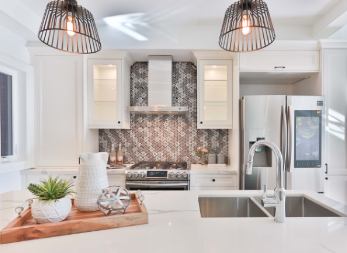Introduction
Lighting is the key to creating a warm and inviting home. From the moment you step through the door, a well-lit space can instantly make you feel relaxed and welcome. But how do you know what kind of lighting fixtures to choose? The answer lies in finding the perfect lighting for your space – one that perfectly complements your interior design and brings out the best in it. In this blog post, we’ll explore five ideas for adding the perfect lighting to your home, so you can create a brighter, happier place for yourself and your loved ones.
Natural light
One of the best ways to add lighting to your home is to let in more natural light. This can be done in a number of ways, such as adding windows, skylights, or glass doors. If you have the opportunity, situate your home in a way that takes advantage of natural light sources. For example, placing your home near a south-facing window will allow more sunlight to enter during the day.
Adding natural light to your home can make a big difference in how it feels. Here are some ideas for ways to let the light in:
1. Use light-colored paint or wallpaper.
2. Keep windows clean and free of obstructions.
3. Install skylights or solar tubes.
4. Add mirrors to reflect light.
5. Use light-filtering window treatments.
Strategic use of lamps
Different lamps can create different feels in a room. For example, a table lamp with a warm bulb can create a cozy feel, while a bright floor lamp can make a space feel more open and airy. The strategic use of lamps can help you achieve the specific atmosphere you want in your home.
When choosing lamps for your home, consider both function and style. Desk lamps and task lights are essential for any workspace, while pendant lights can add a touch of elegance to any room. Table lamps are versatile pieces that can be used to create both ambient and accent lighting. And don’t forget about floor lamps! These tall fixtures can provide both general and targeted illumination.
Think about the lightbulbs you use as well. LED bulbs are becoming increasingly popular because they last longer and use less energy than traditional incandescent bulbs. But if you prefer the softer light of an incandescent bulb, that’s fine too! Just be sure to choose the right wattage for your needs.
Finally, pay attention to the overall aesthetic of your home when selecting lamps. If you have a modern decorating style, opt for clean-lined fixtures with minimal embellishments. For a more traditional look, go for lamps with intricate details and lovely finishes.
LED lighting
Modern LED lighting is one of the most energy-efficient and longest-lasting lighting options available. LEDs (or light-emitting diodes) are semiconductor devices that convert electricity into visible light.
The benefits of LED lighting include:
• Low energy consumption – LEDs use up to 90% less energy than incandescent bulbs, resulting in significant energy savings over the life of the bulb.
• Long lifespan – With a lifespan of up to 50,000 hours, LEDs outlast even the most long-lasting traditional lightbulbs by several years. This means fewer trips to the store for replacement bulbs, and lower maintenance costs over time.
• Durability – Unlike glass bulbs, LEDs are encased in durable epoxy resin, making them much more resistant to breakage and vibration. This makes them ideal for use in high-traffic areas or locations subject to frequent bumps or jostling.
• Versatility – LEDs are available in a wide range of colors and beam angles, making them suitable for a variety of applications both indoors and out. You can find LED bulbs designed specifically for task lighting, accent lighting, ambient lighting, and more.
Incandescent lighting
For many people, incandescent lighting is the first type of lighting that comes to mind when they think about adding additional light sources to their home. Incandescent bulbs are relatively inexpensive and easy to find, making them a popular choice for task lighting and accent lighting.
However, incandescent bulbs are not as energy-efficient as some other types of lighting, so you may want to consider this before adding them to your home. In addition, incandescent bulbs can produce a lot of heat, so be sure to keep this in mind when considering where to place them in your home.











